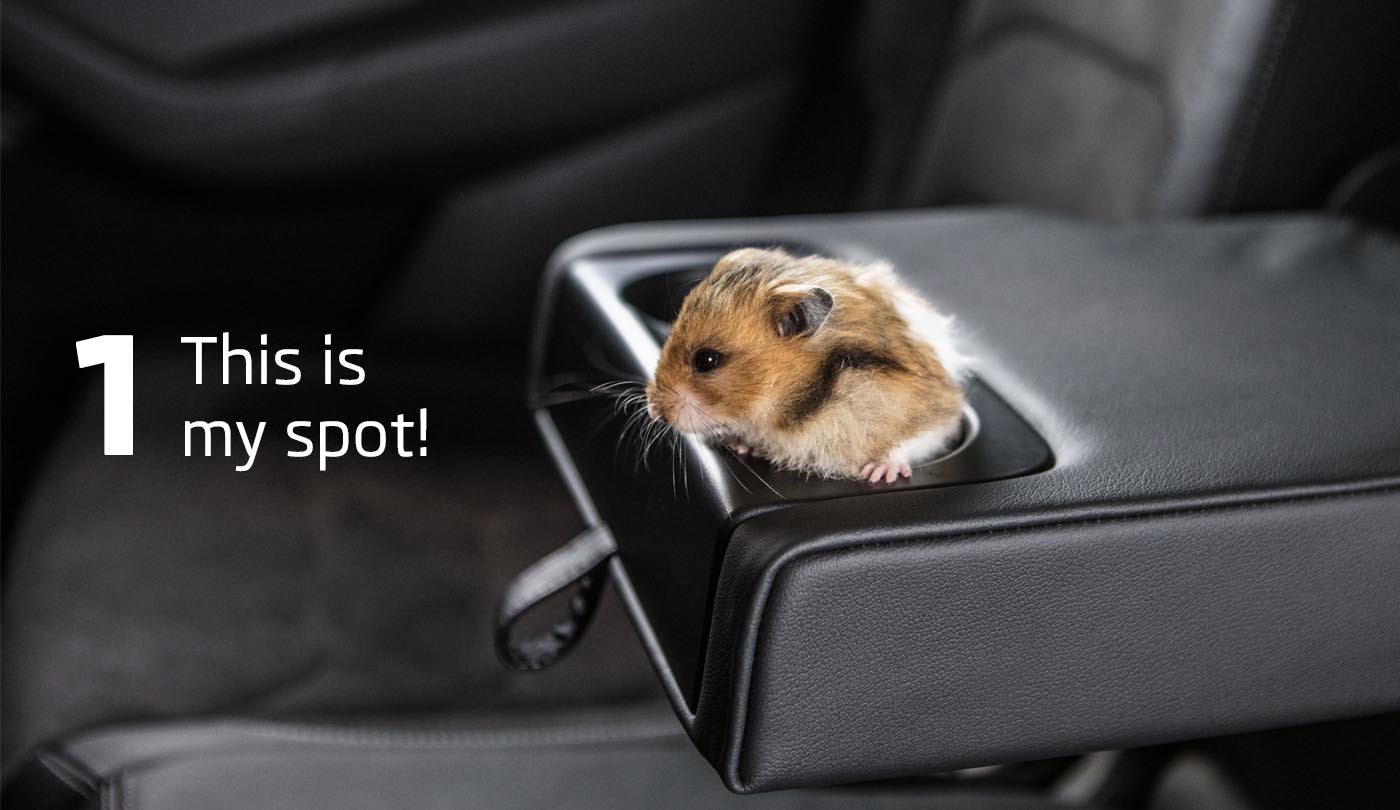
It always helps to have clear and understandable rules when living with an animal. When travelling, your pet should have “his own” assigned place in the car that he can get used to. Teach him where his permanent place is and don’t change it later, if possible. At least in the beginning, it’ll help to arrange it a bit like he knows it at home. This could be a favorite blanket, a toy, or some other object he’s used to.
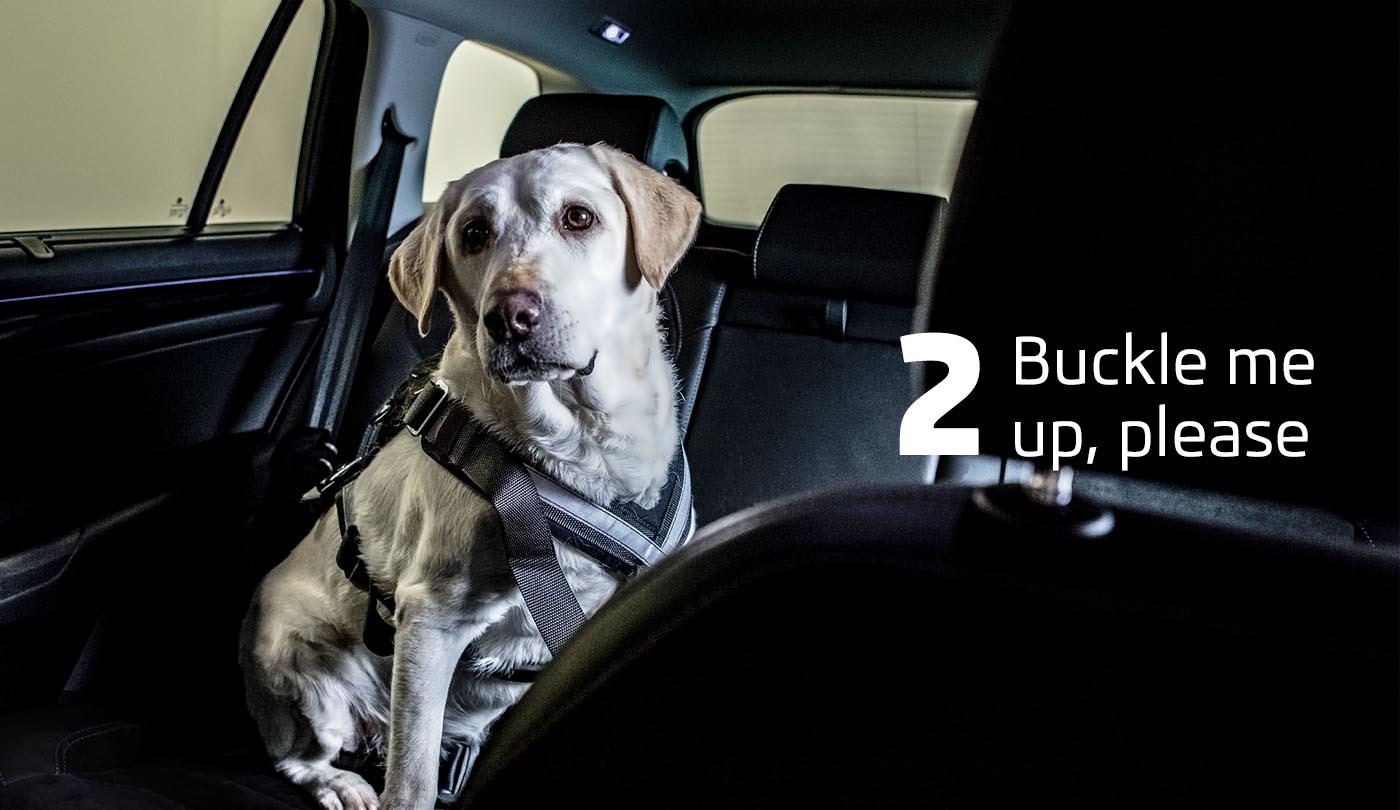
One option is to transport your animal in the very back, but in this case it should be separated by a mesh. But this doesn’t work for all owners and pets. Ideally, he should ride in the back seat using a special harness that attaches to the safety belts. An adjustable animal harness can be cheaply bought for each vehicle as part of original accessories. Be careful, though, your pet should never be attached by his collar.

Excessive noise harms not only people, but also animals. Some studies, for example, have shown significantly worse hearing in hunting dogs who are frequently exposed to gunshots. Loud music may pose a similar threat. Prolonged exposure to a single type of sound that’s constantly repeated is especially detrimental to a dog or cat’s hearing. Having the radio “at full blast” while driving is definitely not good for him.

If you’re bothered by your pet’s fur, saliva, mud and other “by-products”, you can use an original protective coating on the back seat. It’s compact, installing it is a matter of less than a minute, and it completely protects the seat from getting dirty or damaged. The surface of the fabric is waterproof, easily washable, and even non-slip, so travelling is more comfortable. Now you and your travel companion can set off without the undue stress.

Long travel is difficult for everyone. Dogs should take a break every two to three hours, but each pet is different and some animals may require more frequent stops. Use the break not just for walking, but also for drinking and feeding. It’s always better to feed an animal outside instead of addressing this need while driving. If you're unsure of how he’ll feel during the ride, make more frequent stops.
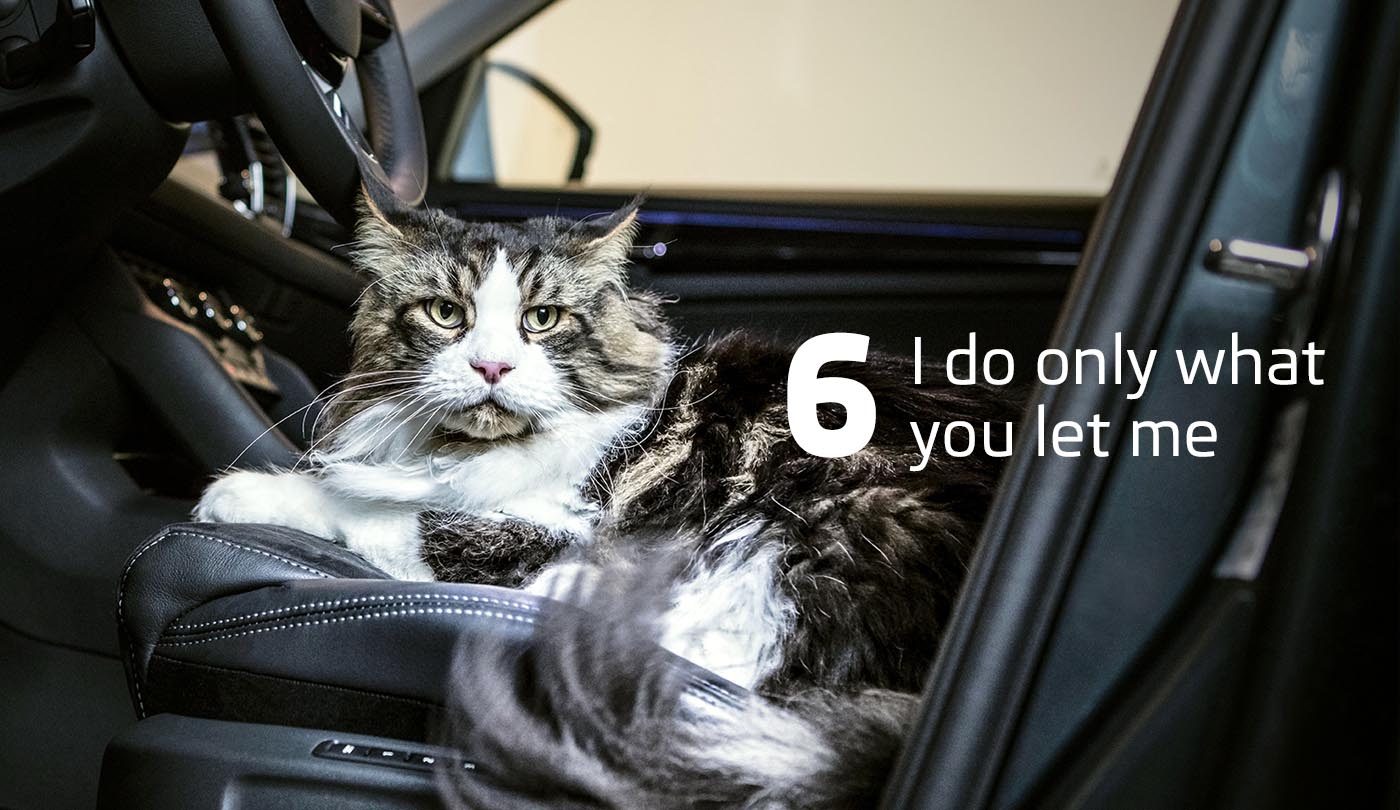
Only animals who obey basic commands or are firmly secured should be transported inside the cabin. Driving a vehicle requires your full attention, and the shortest distraction could lead to an accident. If your cat has his own head – like most cats in the world – he’ll definitely be safer in a travel box than on the driver’s lap. Even though he considers this his rightful spot.

So you bought a cute little piglet but it turned into a massive swine? Don’t worry, modern cars are sturdy. All the same, it’s worth investing in some special equipment. For example, you can equip your car with a durable rubber floor in the trunk, or a practical barrier for dividing the interior space. This will prevent damage and reduce the possibility of injury. To prevent odours, don’t cover them, but remove them. Vacuum regularly, clean your car, and wash your pet as well.
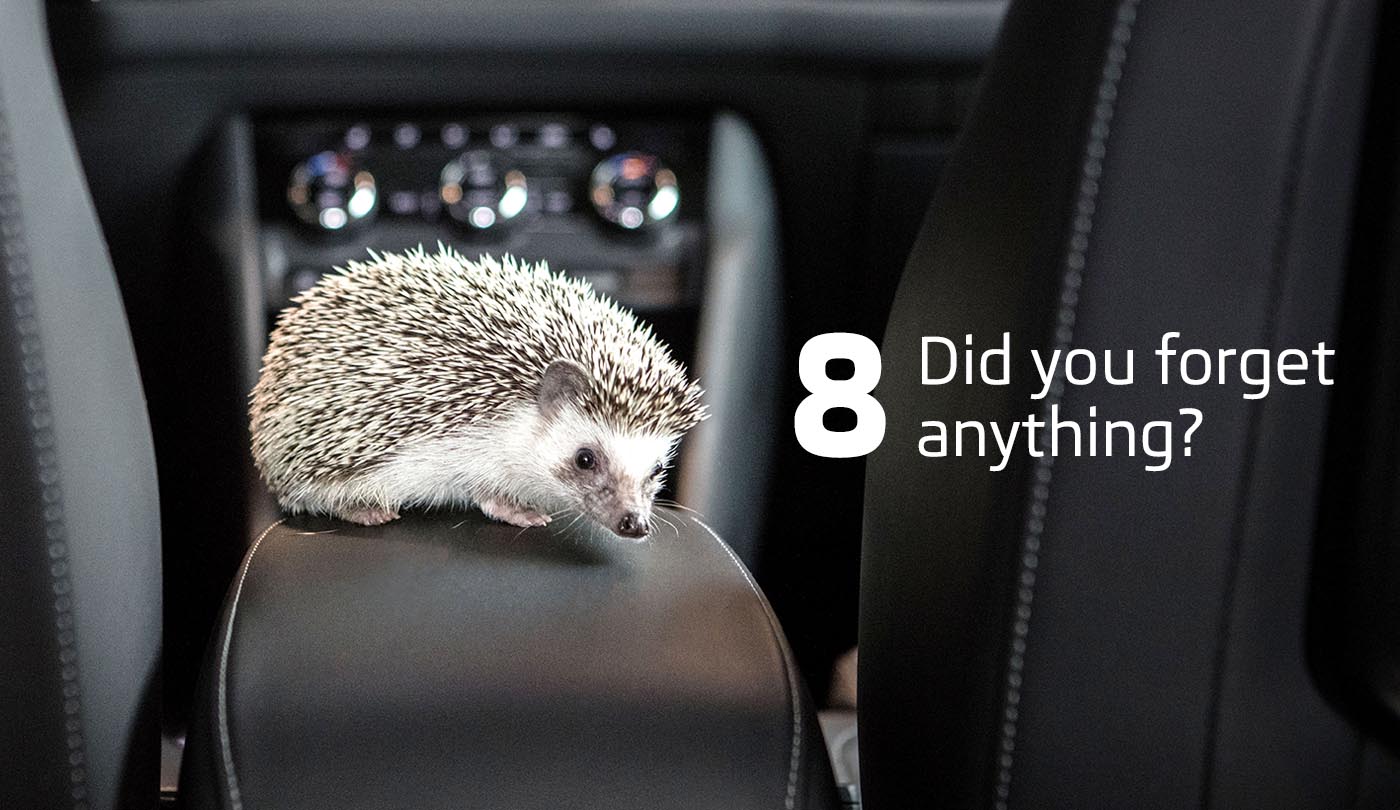
Before every long trip, prepare a special travel package for your pet. This should include all the important information – documents and any medicines, food, pet bowl, at least a basic supply of water (local resources may not always be appropriate), one or two good toys, cleaning agents and bags for disposing of faeces and dirt, and even his own pillow, blanket, or dog bed. This way he won’t be missing anything and he’ll feel more like home.
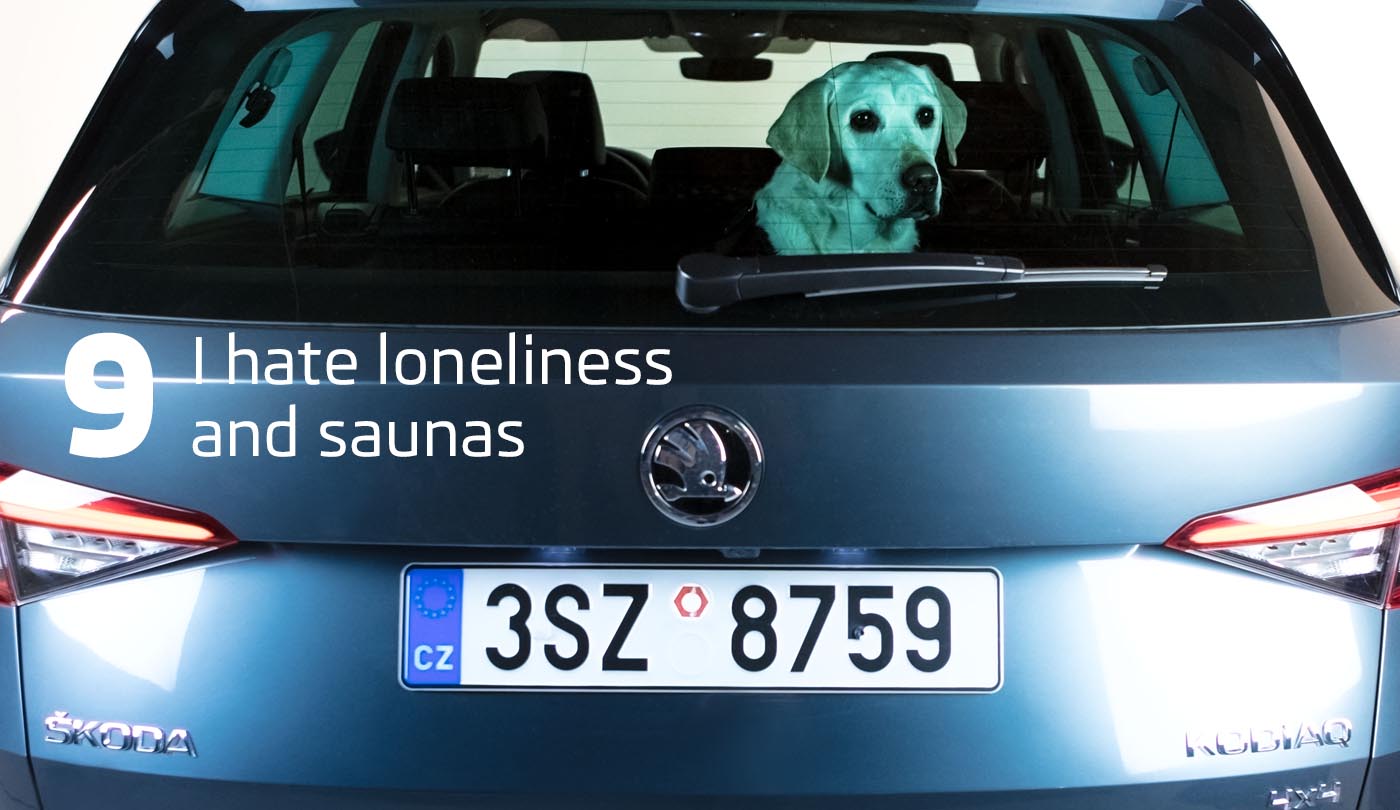
There are countries where locking animals in an empty car is illegal. It’s a dangerous habit in any case. On warm days, the temperature inside the vehicle can quickly double, even if it’s partly cloudy outside. Even a slightly open window has only a negligible effect on the outcome, and overheating can lead to death. The situation in the winter isn’t much better, so apply this simple rule – rather than having to leave the animal in the car, leave it at home instead.

It’s hard to resist your pet’s wishes when looking into his eyes. Just keep in mind that health is the most important, and safety always comes first when driving. Small pets travelling on your shoulder or freely inside the car can be injured during braking, and a pet on your lap is at risk of serious injury in an accident from the airbag. This is why you should apply more stringent standards towards animal passengers than towards people, and not vice versa.






























